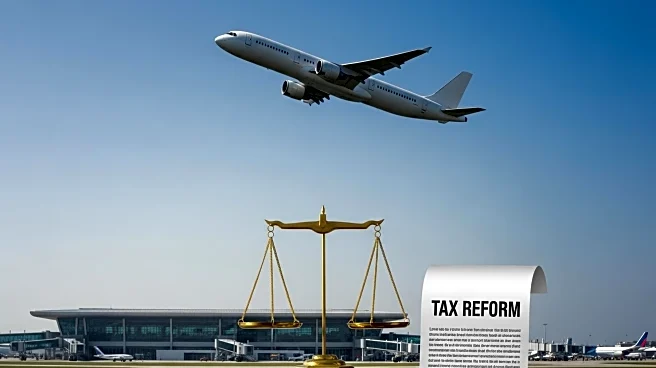What's Happening?
Airports Council International (ACI) World projects that global commercial air traffic will reach 9.8 billion passengers in 2025 and exceed 10 billion in 2026. The growth is driven by emerging markets in Africa, Asia-Pacific, the Middle East, and Latin America, supported by rising demand and the presence of low-cost carriers. However, growth is uneven across regions, with North America expected to see flat passenger traffic due to a contracting U.S. domestic market. International traffic is growing faster than domestic traffic, with geopolitical events and macroeconomic conditions influencing the trajectory.
Why It's Important?
The projected growth in global passenger traffic highlights the expanding aviation market and the role of emerging markets in driving this growth. The uneven growth across regions underscores the challenges faced by mature markets, including geopolitical tensions and demographic shifts. The forecast reflects the need for infrastructure investment and policy alignment to sustain growth and address regional disparities. The aviation industry's ability to navigate these challenges will impact economic development, international connectivity, and the future of air travel.
What's Next?
ACI World expects global passenger traffic to continue growing steadily over the second half of the decade, reaching 11.8 billion by 2030. The industry must focus on infrastructure investment, policy alignment, and resilience to geopolitical and economic uncertainties to sustain growth. The forecast suggests that international traffic will provide strong momentum, but sustaining this trajectory will require addressing regional disparities and external risks. The aviation industry must adapt to changing traveler behavior and policy shifts to maintain its growth trajectory.
Beyond the Headlines
The forecast by ACI World highlights the importance of understanding regional dynamics and external risks in the aviation industry. The growth in emerging markets presents opportunities for expansion, while mature markets face challenges that require strategic adaptation. The industry's ability to balance growth with infrastructure development and policy alignment will shape its future. The forecast serves as a reminder of the interconnectedness of global markets and the need for collaboration to address common challenges and opportunities.










